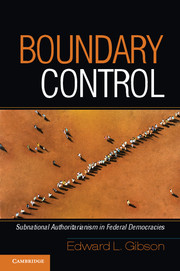3 - Subnational Authoritarianism in the United States
Boundary Control and the “Solid South”
Published online by Cambridge University Press: 05 January 2013
Summary
On the fundamental issue, only the Federal Government was to be feared.
V. O. KeyTHE UNITED STATES AS A COMPARATIVE CASE
In the years following the Civil War of 1861–65, the United States experienced a “transition to democracy.” Sweeping national legislation granted full citizenship to four million people and enfranchised more than a million. However, this was not a transition to democracy in the sense used traditionally by democratization scholars. The national government had been democratic for more than 80 years, and most men living in the country already enjoyed these rights. What the United States experienced during that period was the most extensive case of territorial democratization in history. Clusters of voting and civil rights long available to inhabitants of other jurisdictions of the country were extended to inhabitants of a group of states that held more than one-third of the national population. Most of these had been slaveholding states before the Civil War and had formed part of the short-lived secessionist experiment known as the Confederate States of America (Figure 3.1). As a result, competitive state-party systems, linked to a national competitive party system, emerged throughout the region.
- Type
- Chapter
- Information
- Boundary ControlSubnational Authoritarianism in Federal Democracies, pp. 35 - 71Publisher: Cambridge University PressPrint publication year: 2013
References
- 2
- Cited by

